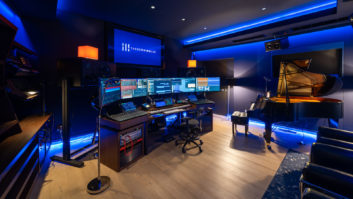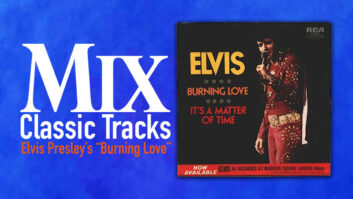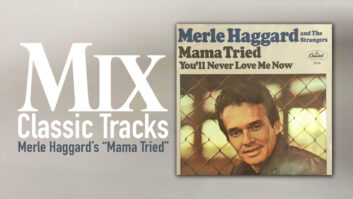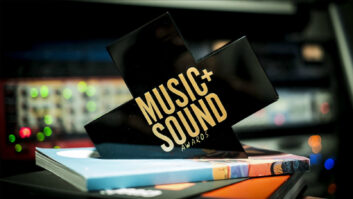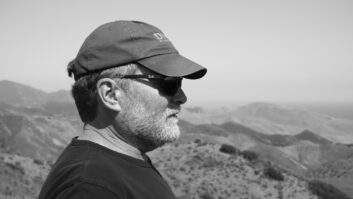LOS ANGELES, CA—One potential problem with building a home-based recording studio is that the construction of a soundproofed, trapezoidal room might adversely affect the resale value of the property. One solution is to hire an acoustician that can provide an appropriate design that avoids using angled walls or changing the original shape or dimensions of the room.
Anyone familiar with traditional studio design might think it impossible to create a room with even a decent acoustic signature using two sets of parallel walls. But ZR Acoustics, a proprietary technology developed by Hanson Hsu, principal at L.A.-based Delta H Design, defies that logic.
Hsu’s company designed and built The Lab Studios, a two-room facility at a tony residence in the Los Angeles area, for a well established songwriter, producer and multi-instrumentalist (who wishes to remain anonymous), who wanted the rooms to not only share the décor of the rest of the house but also remain structurally unchanged in appearance. Using ZR Acoustics, Hsu created an acoustic signature tailored specifically for mixing in one room with a dual-use mixing/tracking design in the second room. The two rooms, which are not adjacent, are linked via tielines, Ethernet and video.
According to Travis Ference, an engineer who has worked with the owner for nearly two years, not only do the rooms meet the design criteria, but they also exceed the acoustic performance of a traditional design, most notably in the large sweet spot. “It’s a bit of a luxury,” he says. “You can be off to the side, or even come back and talk to somebody in the back of the room, and you’re still pretty much hearing the mix. In this room, you can be in the corner and still know what’s going on. It’s amazing.”
The facility is used for traditional song production as well as motion picture, television and commercial work. As Ference relates, a client’s urgent request for changes to a mix right in the middle of the move-in process quickly demonstrated the acoustics of the new control room.
“There were boxes on the floor and movers everywhere, so I was sitting on a box, with the monitor on another box and two speakers almost where they should be. I grabbed some vocals that somebody else had cut for us and put them into the mix. I hear vocals cut in that room all the time. I pressed play and thought, there’s a lot of room on this vocal! I’d never noticed it before, but now there’s no ‘room’ in my listening environment, it’s really noticeable. The room doesn’t have much of an effect on what you’re hearing. You really hear reverbs tail out.” As for isolation, he says, “You can listen at reasonable volumes and anybody else in the house never really hears anything.”
The tracking room works particularly well for vocals and acoustic instruments, according to Ference. “Vocals are really great. We don’t even baffle the singer off any more. You can get a really dry vocal sound, the way Hanson designed the room.”
The equipment at The Lab is a mixture of digital and analog. “We have analog stuff to put tracks down with, and we mix down through analog, but mostly it’s in Pro Tools. There’s no console and no control surface; just a trackball. We sum analog—we use the Dangerous 2-Bus. It definitely makes a big difference,” he says.
Having worked in one of Hollywood’s most venerated recording studios, Ference can see advantages to working in a homebased facility. A commercial studio also has some benefits, of course. “Interaction is one of the things that you miss in private home studios, that open-door studio setting,” observes Ference. “You still get collaborations, but it’s different.”
But a home setup is certainly conducive to the way that the owner works on multiple projects simultaneously, he continues. “We can go downstairs, recall a mix in a minute because it’s all in the box, with analog stuff on the outside, run it down with the vocal up or whatever, and then move on to what we were doing five minutes ago, without having to go somewhere else.”
There’s little doubt that home studios are here to stay, he says, and there’s no reason not to build one to the best possible standards. “Budgets aren’t going to put you in a studio forever. The way things are now I don’t think you could compete professionally every day without being able to make informed decisions at home, or be able to have that space.”
Delta H Design
deltahdesign.com
Dangerous Music
dangerousmusic.com

